
The history of the National Western Stock Show is Denver’s history. Visitors and exhibitors experience Denver’s roots every January, as Western culture pervades the city for two weeks. As the National Western Center undergoes major renovations over the next few years, the changes will be met with a mix of nostalgia and anticipation.

The MLK Jr. African American Heritage Rodeo is one of multiple rodeos held annually
at the Stock Show.
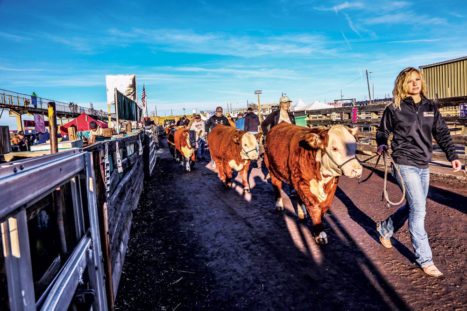
Ranchers lead their cows to the judging area.
“In the old days, ranchers brought their livestock to market at the Stock Show by train and by horseback,” says Clinton Laflin, a fifth-generation rancher from Montana whose family has brought Black Angus cattle to the Stock Show since 1958. “My family has grown up along with the National Western. My great-grandfather judged livestock at the Stock Show back in 1932. It’s nostalgic for me there.”
But Laflin welcomes the changes to come as the area is transformed into the National Western Center. Between now and 2023, the grounds will be expanded and new facilities and infrastructure will be completed. “Things need updating for better accessibility, electrical and ventilation, especially in the old barns,” Laflin says. “To be relevant, the Stock Show, like all of agriculture, needs to evolve and improve.”
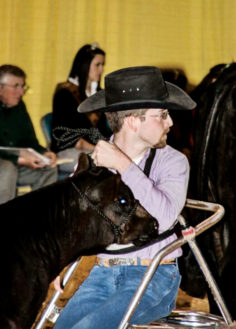
Rancher Clinton Laflin, who uses a cane or a walker due to cerebral palsy, is shown with one of his calves.
Paul Andrews, president of the Western Stock Show Association, says the National Western is considered the premier stock show in the U.S. because “we do the big four elements of a show: a huge livestock show, multiple rodeos, horse shows and a trade show, all at a very high level.”
He says the renovation is a necessity to keep it competitive. “The deferred maintenance of the buildings over time had become too big of an obstacle for the association to overcome—around $100 million. The buildings also became noncompetitive in the world of rodeo, livestock shows and horse shows.”
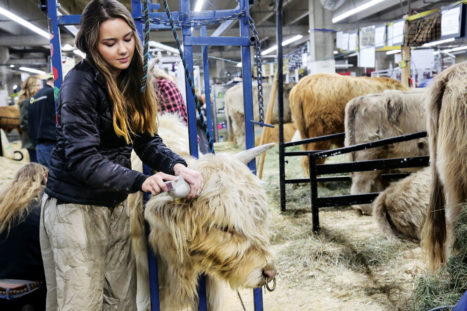
Animals are lovingly groomed before judging.
As part of a longtime ranching family, Andrews understands the feelings of nostalgia surrounding the old facilities. “We (the Stock Show) have been here since 1906. The yards, for instance, have been in their position since 1906. We will maintain this area and expand our yards so that they can be the celebrated asset they should be moving forward. We are going to reuse much of the wood around the site as part of the new build-out of the complex in creative ways so that we are honoring the past while we’re heading toward the future.”
Laflin and his father, Guy Laflin, own and operate North Camp Angus Ranch in St. Ignatius, Mont., where they run an average of 150 cattle. “Our business is improving cattle genetics to improve the quality of meat,” Laflin says. “Most of our cattle don’t go into the food chain, but provide genetics to commercial cattlemen. Most people don’t know that 90 percent of cattle ranches in the U.S. are still family owned and operated. The vast majority have not been taken over by factory farming.”
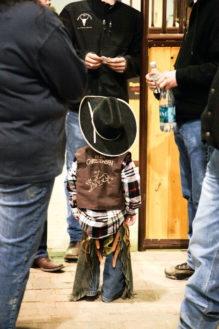
A young cowboy decked out in his best Stock Show clothing.
Laflin, 28, has cerebral palsy. “It’s caused by a brain hemorrhage that can affect various capabilities, like speaking and walking. I’m fortunate that mine affects me like a stroke: the coordination on my right side is more compromised than on the left. I use a cane most of the time and a walker where the ground is uneven. I live, work and drive independently and I can do most things on the ranch. You won’t see me carrying big sacks of feed or moving cattle through a chute. I’m typically on a horse and not in a situation where I have to move fast.”
Other branches of the Laflin family raise cattle in Kansas and Nebraska. The Laflin family reunion is at the Stock Show each year. “We don’t see everybody at Christmas; instead, we wait until the second week of January,” says Laflin. “My aunts, uncles and cousins all come. The cattle stalls are situated in aisles and we call our shared extended family area the ‘family aisle.’ I love to walk around the barns with my cousins and evaluate the cattle.”
The Montana Laflins drive 16–24 hours to Denver in a pickup with a gooseneck trailer. This year they’ll bring two bulls and two females to the Stock Show. “We’ll target our longtime customers to market our program and sell cattle. We’ll spend 10 to 14 days in Denver,” Laflin says.
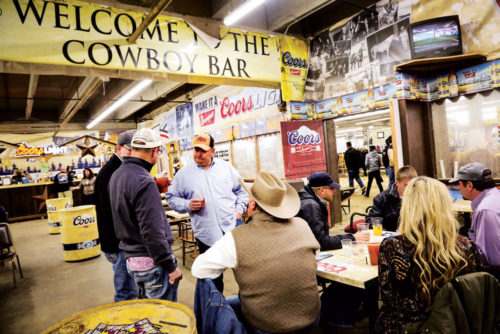
The Stock Show offers tired visitors numerous options for food, drink or simply absorbing the western culture all around them.
Andrews says the new Stockyards Events Center, where livestock auctions will take place, is one of the improvements that will benefit ranchers and visitors in the future. The new building is slated for completion in 2021. “The public can watch auctions anytime. The Pen [3–5 animals] and Carload [10–12 animals] Show is really a good one. In the new facility it will get larger. The current facility is run down, and it’s very tight in putting people in there. The new facility will be set up better to run cattle in and cattle out. So more people can bid, more people can watch, and the animals can move around better.”
The new facility can be bigger because the National Western Center, through land purchases by the City of Denver, has more land, growing from 95 to 250 acres, says Andrews. This year and in 2019 that extra land will still be empty, offering more parking for visitors than in the past. “2020 is when you’re going to see some things shifting around, potentially with the yards being rebuilt and the Stockyards Events Center inside the yards being built.”
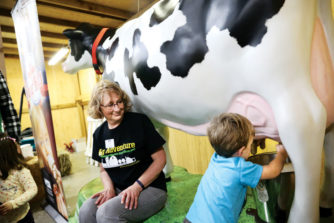
One of many children’s educational activities is learning how to milk a cow.
Along with the new Stockyards Events Center in 2021, construction of the livestock and equestrian centers will be underway, as well as plans to turn the complex into a year-round facility. “The livestock pens are going to be temporary,” Andrews says. “They’ll go in in January, and come out at the end of January so we can use that area as an events pavilion from February to December.”
Laflin says the renovations will make agriculture more accessible for visitors. “But it will still have the historic tie. So many families like ours bring cattle to the National Western. We’ll be sad to see it change, but we’re also excited. It will be different, but the National Western will always be important in my life.”
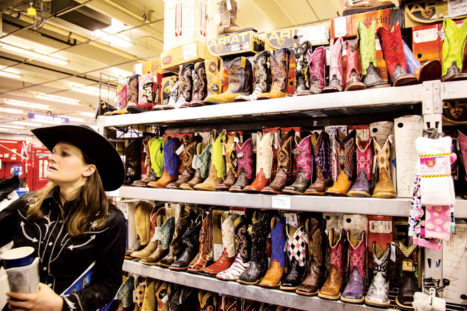
Western wear (and wares) abound at the Stock Show, from a vendor with unique boot colors and patterns.
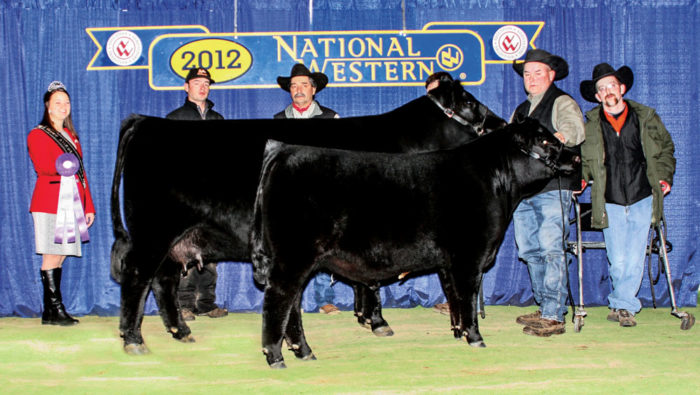
Clinton Laflin, interviewed in this article, is pictured at far right in 2012, the year he won Champion Cow/Calf Pair at the National Western Stock Show. Pictured with him are his extended family, (left to right) Josh Laflin (his cousin), R.D. Laflin (his uncle), and Guy Laflin (his dad).




0 Comments